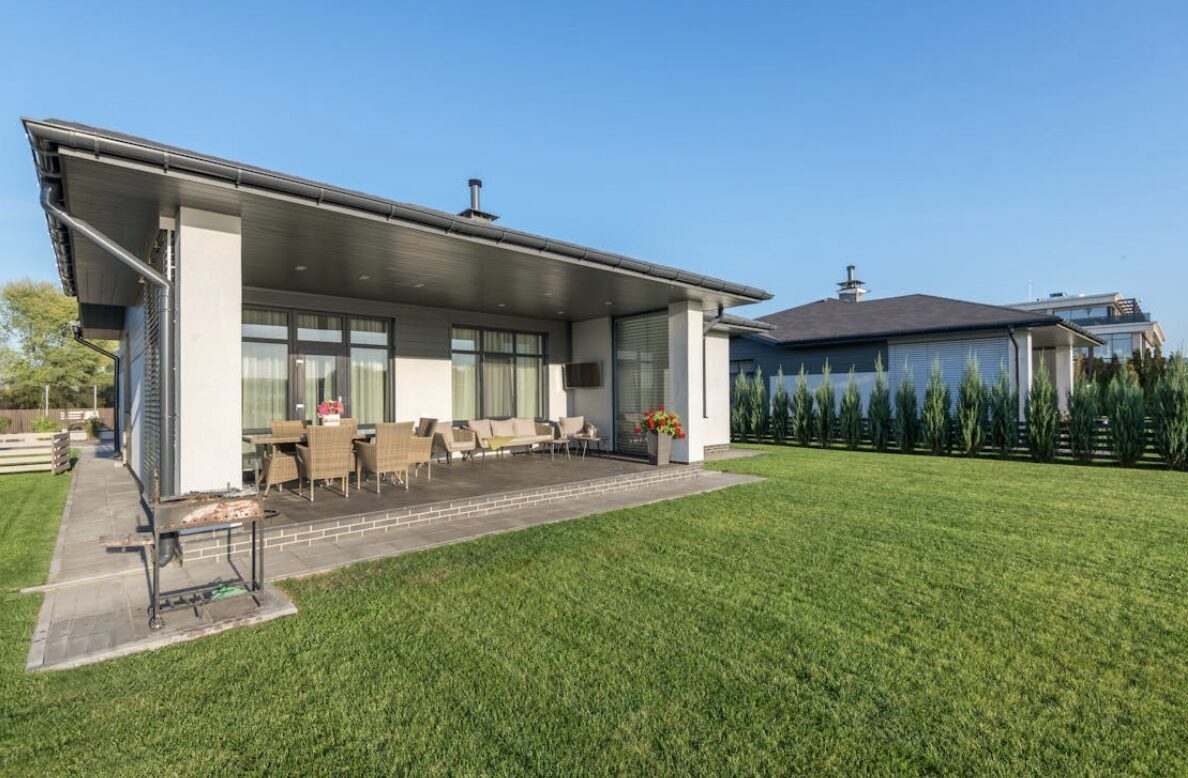A landscape has the ability to look like you have a professional landscaper on staff without demanding constant attention. The appearance of care often comes from design choices made before the first plant is in the ground. Clear structure, consistent materials, and plant groupings do more to establish visual balance than constant pruning ever will. Choosing the right components in the beginning reduces long-term work.
Prioritize Structural Simplicity
A clean layout reduces maintenance needs across the board. Start with fixed elements:
- Gravel paths, stone borders, and defined beds help shape the space and contain growth. They also reduce areas that would otherwise need mowing or edging.
- Straight lines take less time to maintain than irregular ones.
- Raised beds help control soil quality and give plants a boundary.
- Larger stones placed around key zones work as visual anchors and help control runoff.
Select Plants Based on Ecological Compatibility
Plants that match their climate need less intervention and love, although you should love all your plants the same. But they will become the lesser “problem child” because they grow in rhythm with the local weather and are already adapted to the soil. When water availability shifts, these plants tend to adjust. Ornamental grasses, regionally adapted perennials, evergreen shrubs, and certain groundcovers hold shape well and don’t call for frequent cutting. Grouping them by water and sunlight requirements helps reduce overwatering and simplifies care. Uniform conditions in each zone reduce stress on the plants, which is when they flourish with ease.
Use Mulch Strategically
Mulch covers ground, holds moisture, and blocks weed growth. Organic mulch can break down and feed the soil, but needs replenishing now and then. Gravel or decomposed granite won’t shift much over time and works well in high-exposure spots. Around trees and shrubs, a few inches of mulch make a visible difference. It also keeps roots insulated during temperature swings and hides fallen leaves during autumn. As the surface fades or compacts, add a thin new layer.
Automate Watering Systems
Irrigation systems reduce manual oversight. Drip lines, in particular, deliver water directly to root zones with little waste. They’re more efficient than sprinklers, especially in dry zones where evaporation rates are high. Plants flourish under routine, just like us humans; they will know when to expect their water. Smart controllers and soil sensors help track conditions and adjust flow automatically. A well-tuned system keeps the soil consistent and avoids under- or overwatering. Seasonal checks ensure emitters stay unclogged and reach the right areas.
Limit Turf Areas
Lawns ask for regular mowing, trimming, and irrigation. Replacing some turf with hardy groundcovers or stonework shifts the maintenance load. Groundcovers that stay low, like creeping thyme or clover varieties, can take foot traffic and still hold shape. When used in strips or islands, these plants create variation without inviting weeds. Edging around lawn sections keeps them contained. The more defined the boundary, the easier it is to maintain.
Maintain with Intention
Landscapes respond best to care that’s spaced out and seasonal. Prune when the plant’s structure needs correction, not on a fixed schedule. Split perennials when they crowd themselves. Inspect irrigation setups before summer starts. Mark these tasks on a calendar. This way, care becomes part of the routine, not a weekend-consuming surprise. Professionals like RedStone Property Maintenance & Landscaping are the big guns you call in for seasonal care, ensuring the landscape is ready for what the next season will throw at it.
Conclusion
A landscape that looks maintained is usually one that’s been designed to run smoothly. With structure in place, plants in balance, and systems working in the background, most of the upkeep fades into seasonal routines. The result holds its form through the year without asking for much in return.
Photo Via Pexels

